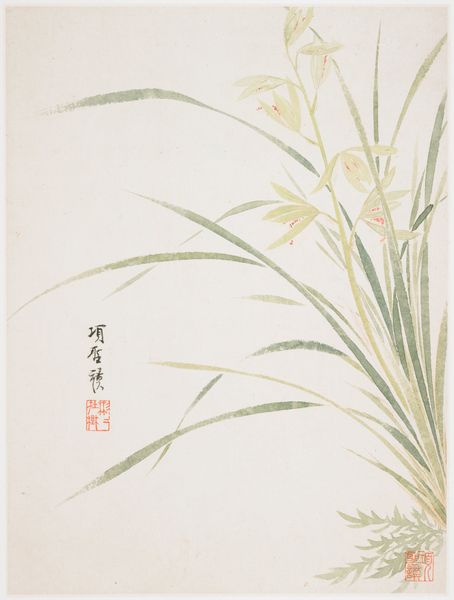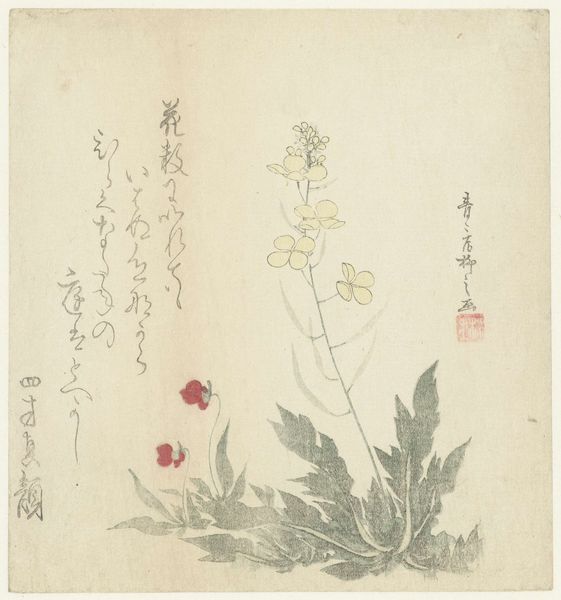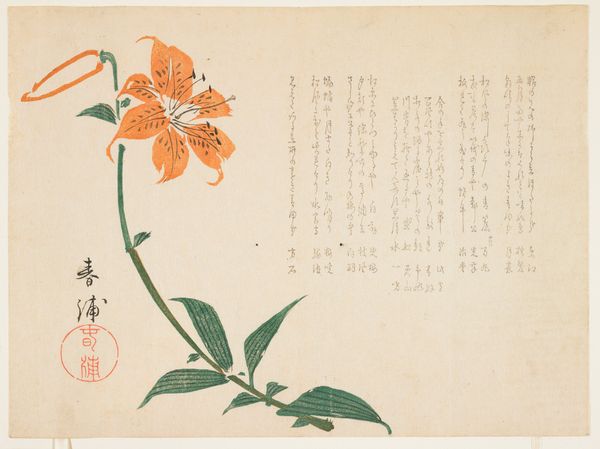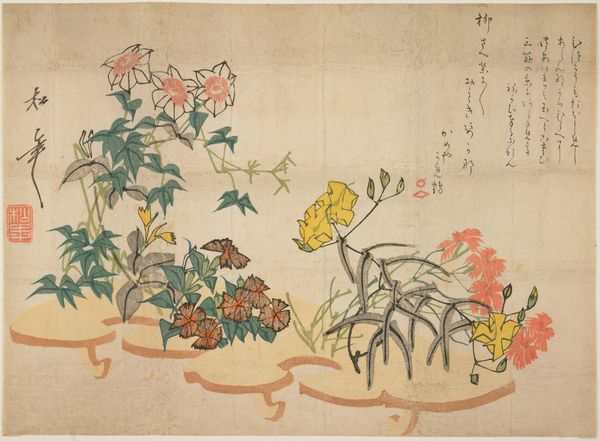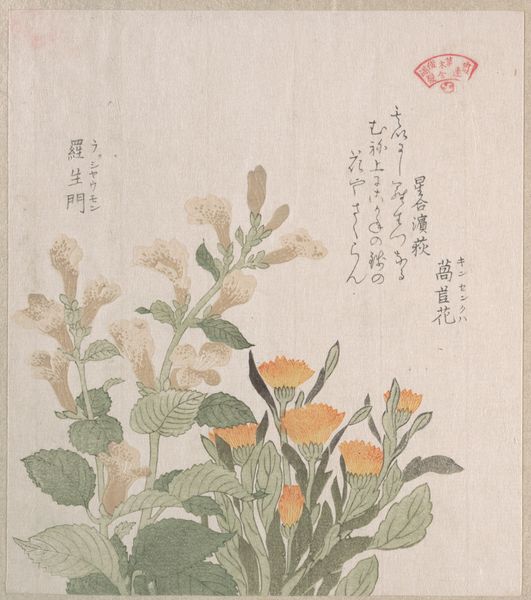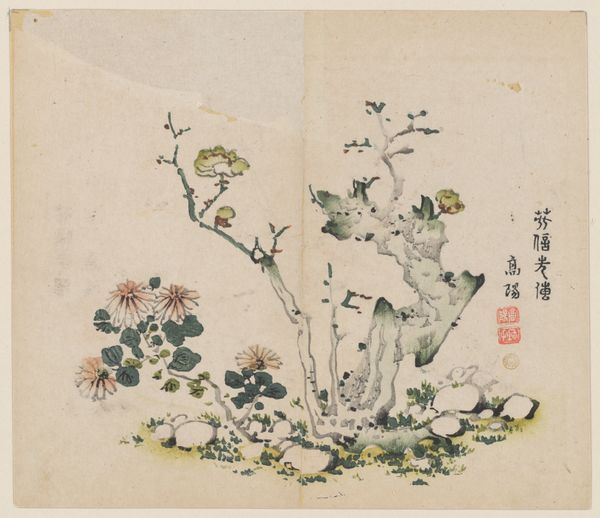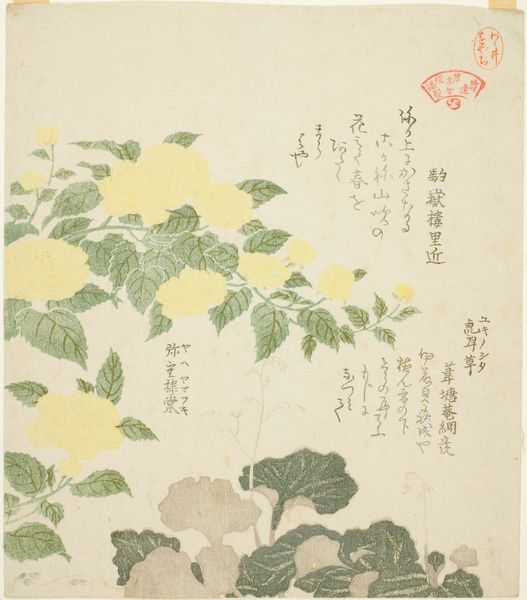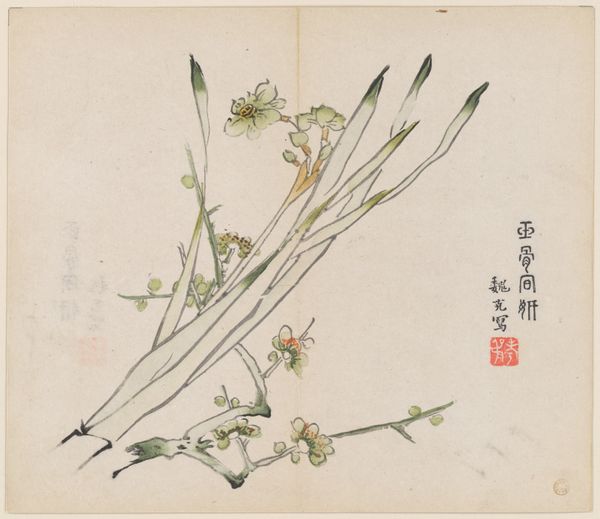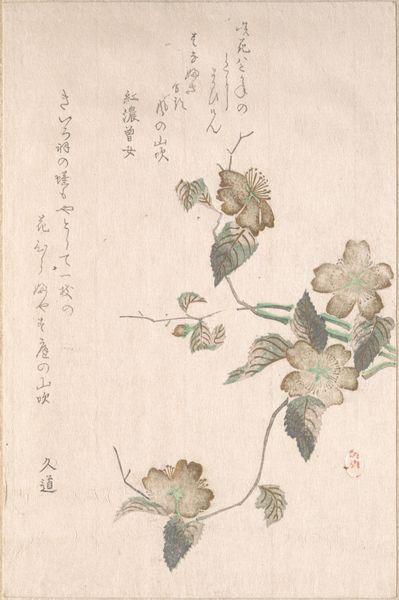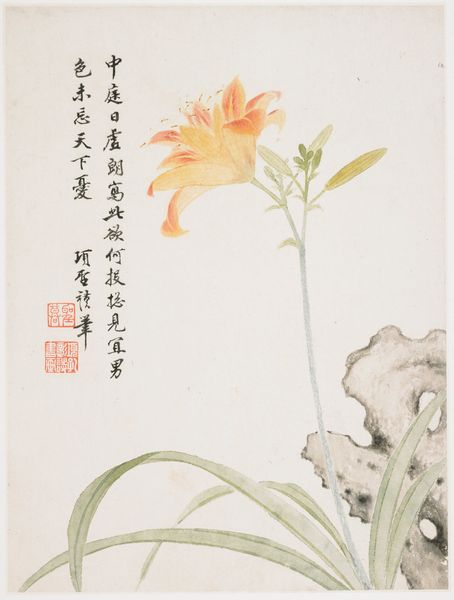
print, paper, watercolor, ink
# print
#
asian-art
#
ukiyo-e
#
paper
#
watercolor
#
ink
#
orientalism
#
watercolor
Dimensions: 9 3/16 × 11 9/16 in. (23.4 × 29.3 cm) (image, sheet, uchiwa-e)
Copyright: Public Domain
Curator: The delicate lines and washes give "Lily," a print created with ink and watercolor on paper by Yamada Hōgyoku in 1839, a surprising boldness. What are your immediate thoughts? Editor: It feels restrained yet energetic. I'm struck by the interplay between the precise botanical illustration and the subtly blurred ground. The materials themselves--ink, watercolor, paper--speak of a controlled, delicate process. Curator: Absolutely. Hōgyoku’s piece belongs to the ukiyo-e tradition. As such it embodies an intersectional dialogue, connecting not only to naturalism and its influences on early Japanese art, but engaging too, with philosophical approaches, to concepts such as zen. The artist engages the observer in reflection beyond representation. Editor: I’m interested in the labor involved in ukiyo-e. Though seemingly simple, each color would have demanded careful preparation of pigments, precise carving of woodblocks. The social context—the workshops, the collaboration of artisans--shapes my reading of the work. We often lose that complexity when simply enjoying an image of a single lily. Curator: True. And this lily can become symbolic when situated within its contemporary socio-political narratives; at that time artistic expression served as visual texts to explore the cultural politics within a confined societal structure. Editor: The pale background fan shape almost elevates the lily, suggesting it is an item for consideration, worthy of contemplation. What about its consumption? These were printed for a market – for display in homes, perhaps? Curator: Most definitely. It makes me think of issues surrounding identity too—Japanese identity at the time, cultural exchange... I can explore philosophical notions connected with orientalism through this singular piece. Editor: For me, it's the material residue of its making that holds the most compelling narratives. That pink, slightly mottled fan, those careful layers of green and yellow—they testify to the labor, skill, and even the market forces that brought this lily to life. Curator: It's been interesting to reconsider my own perspectives and reflect more on its construction and reception. Editor: Agreed. Analyzing how it was constructed changes the way one understands its overall significance.
Comments
No comments
Be the first to comment and join the conversation on the ultimate creative platform.
